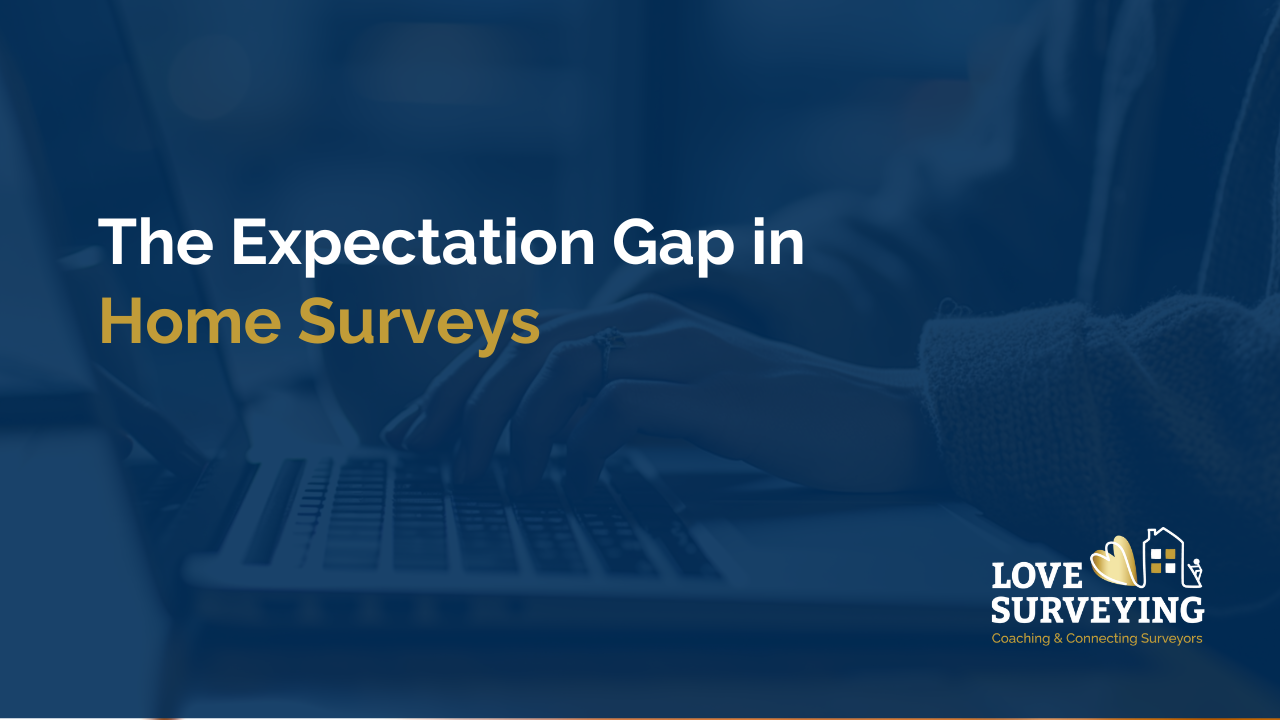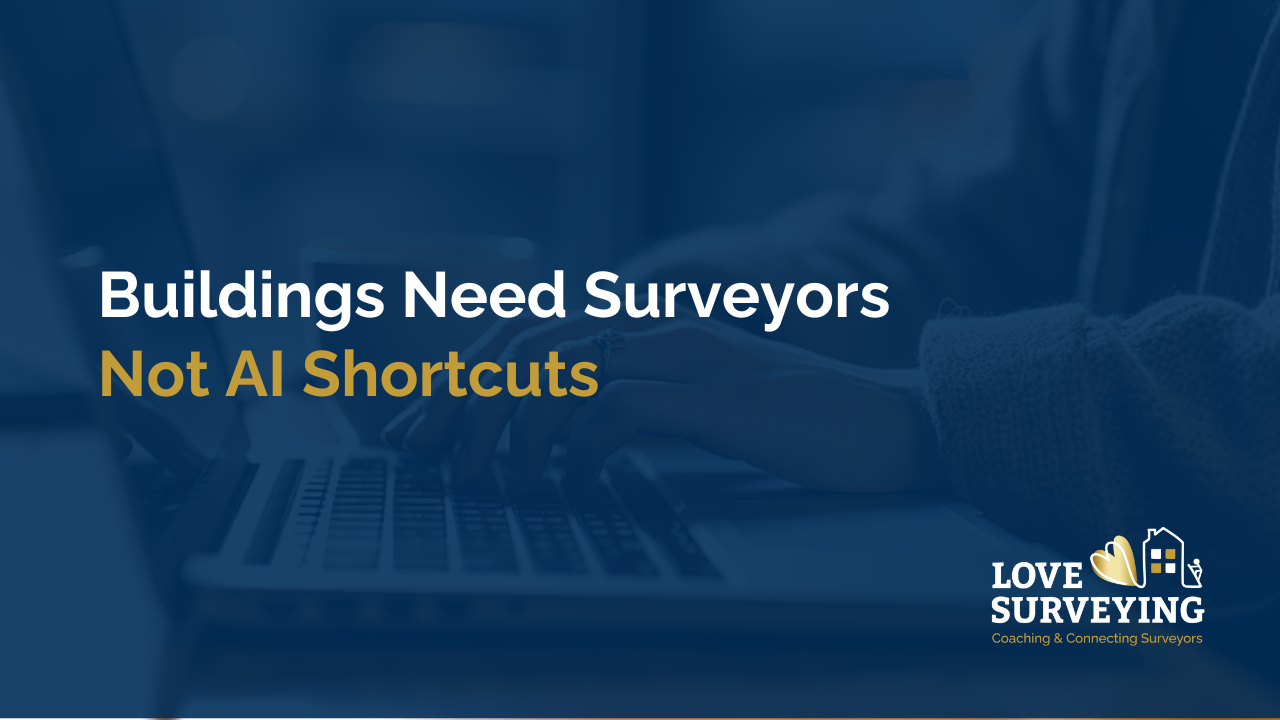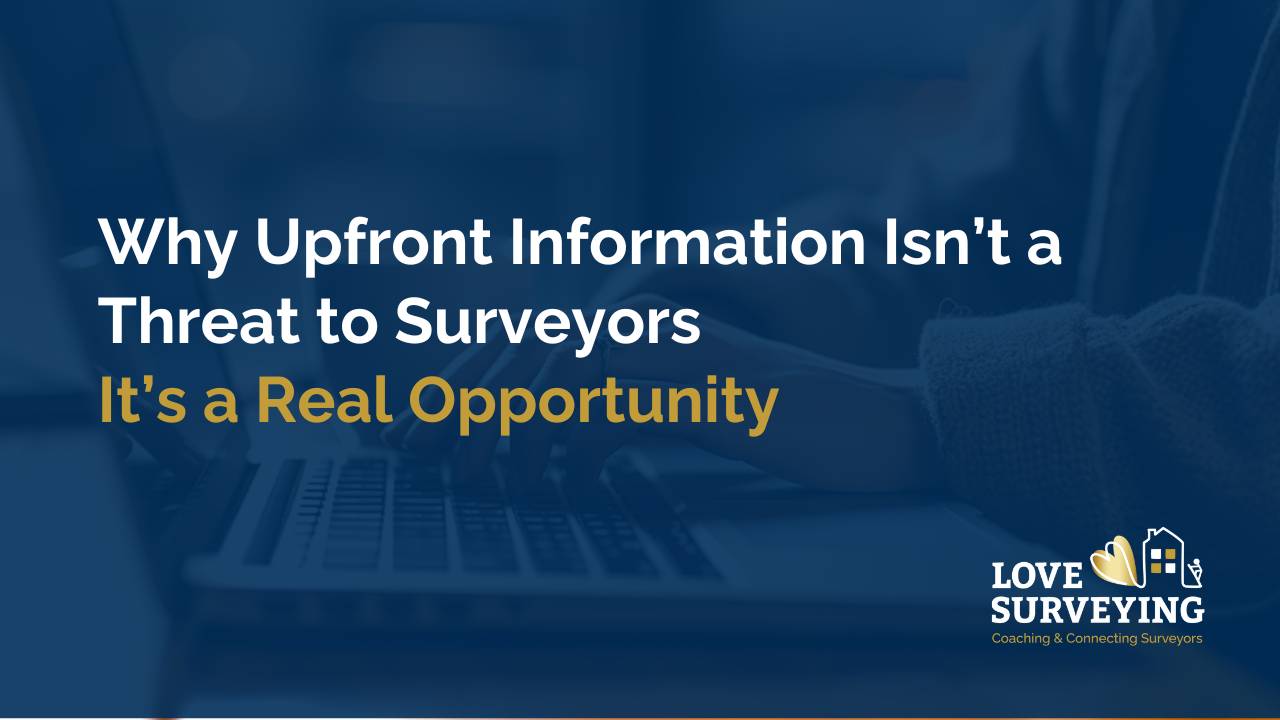Using AI in Surveying: Protect Clients, IP & Reputation
Jul 28, 2025
AI is changing how we work as surveyors. From writing reports faster, how we engage with clients, manage our case files and admin, even generating social media posts and website content. But while you do need to keep up with the trends, you also need to make sure the tools you use don’t compromise your clients, your intellectual property, or your professional obligations.
I am always curious about the risk to consumers and surveyors, and so I want to share with you some things which often get overlooked, and why having some ground rules on how AI is used in your business (yes, even as a one-person business) will be one of the most important steps you take this year.
What Are You Actually Agreeing To?
Many AI tools are marketed as time-savers, for example, you can upload:
- Your notes, and it’ll draft a survey in seconds
- A photo, and it’ll refine it and diagnose the construction or defect
- Your final report, and it will create an audio discussion between two people discussing and explaining the report contents.
And yes, for many of us with years of professional property experience, this is might feel absolutely terrifying, and the legal consequences of a claim are as yet unknown. What I am seeing is surveyors not fully reading the terms and conditions of these tools, and that’s a worry.
In one recent example, a website offers to generate AI-powered draft reports if surveyors upload their report content and templates. Yet the terms allow the company to retain the content, reuse it, and potentially train its AI model with it, even after the surveyor had stopped using the service. In another example, mainly aimed at consumers and agents, there are no limits on how long the information is retained, what it might be used for by the organisation or how it might be used if sold to a third party. Crucially, it's unclear whether there is an option to delete the data.
In practice, what this means is that:
- Your professional insight becomes part of someone else’s product.
- You may lose control over how your templates or methods are used.
- You could expose client data without realising.
What Should Be in Your Internal AI Policy?
Whether you use AI now or plan to, you should set clear boundaries and rules. This doesn’t need to be complicated, just something that helps you think before you upload or automate. Don't forget to share it with everyone in your business and those who support your business, such as admin support.
It could include:
- What you’ll never input into AI tools: Client addresses, confidential photos, full survey reports, etc.
- What’s okay to test with: Generic text, blank templates, blog content.
- A process for reviewing terms of service: Know who owns the output and what happens to your inputs.
- Whether clients will be informed: Transparency builds trust. If AI is used to support report generation, say so.
- PII and GDPR compliance: Ensure anything you do keeps you on the right side of data protection law.
Client Protection Is Still Your Responsibility
It’s easy to assume that tech platforms handle data protection and most position themselves as “independent data controllers” - that means you are liable for any breaches involving client information.
And if something goes wrong? Their liability is usually capped (often at a tiny fraction of what a complaint or claim could cost you).
That’s a huge risk if:
- A draft AI-generated report includes errors.
- You rely on automated responses for client queries.
- Data is stored or reused without your knowledge.
The worry is that, even if we tell ourselves we must always sense-check reports before they are sent, as the tools become convenient, we become blind to the errors. The number of unedited standard paragraphs from drop-down menus is a classic example which has cost some surveyors thousands in claims and reputation.
This Is a Business Decision - Not Just a Tech One
Ultimately, AI might save you time, but you must weigh that against your reputational risk, compliance risk, and client trust. If you’re regulated by RICS or bound by professional standards, you also have to consider what reasonable skill, care, and diligence look like when using AI. Is it still your report if you didn’t write it? What happens if a client complains about the content? And importantly, what does your PII insurer think of it all?
Three Things to Do Now
Write a basic AI use policy for your business.
Keep it simple. It’s about intention and boundaries.
Check the terms of any tool or platform before uploading anything.
Look for words like “irrevocable licence,” “data training,” and “ownership.”
Talk to your clients about how you use AI (if at all).
Especially if it involves their data, property, or the advice you provide.
You don’t need to be anti-AI, but you do need to be intentional. Just because a tool is smart doesn’t mean it’s safe. And just because it’s fast doesn’t mean it’s worth the risk. AI should serve your business, not take it over.
Enjoyed this article?
- You might also like: Reservation Agreements: What Surveyors Need to Know
- Find it useful? Please share it with friends or colleagues who might benefit.
Want to support my work? Leave me a quick Google Review or Buy Me a Coffee ☕. Every little helps as a small business.





